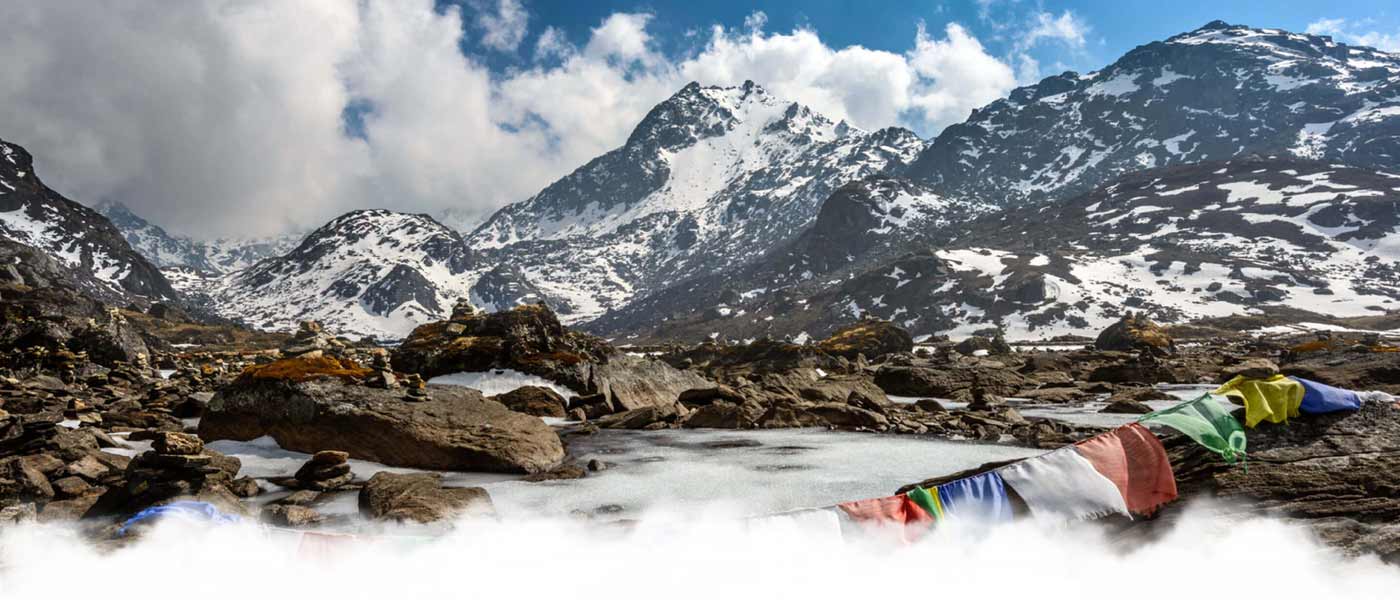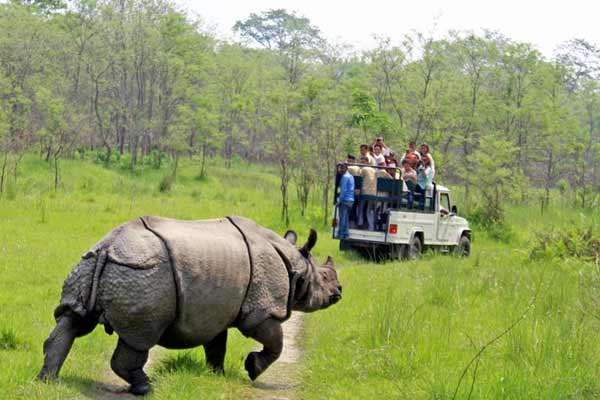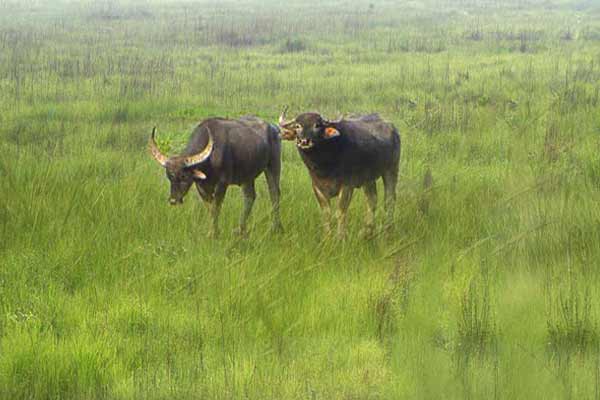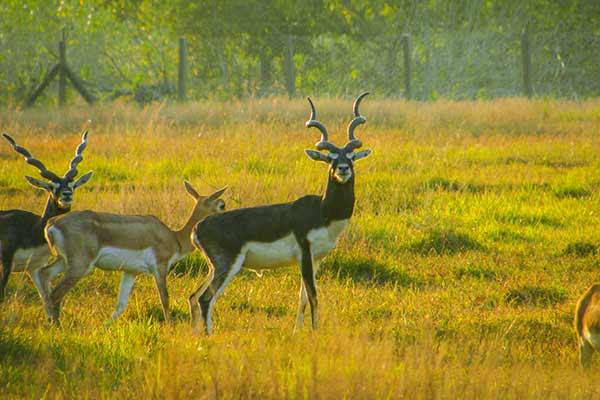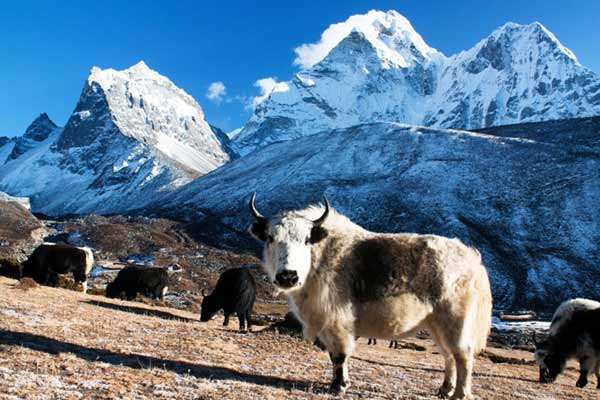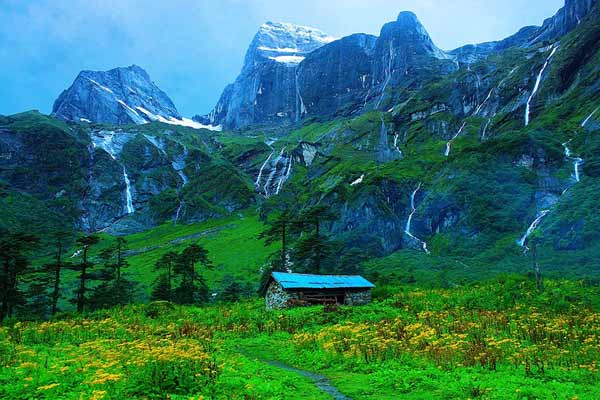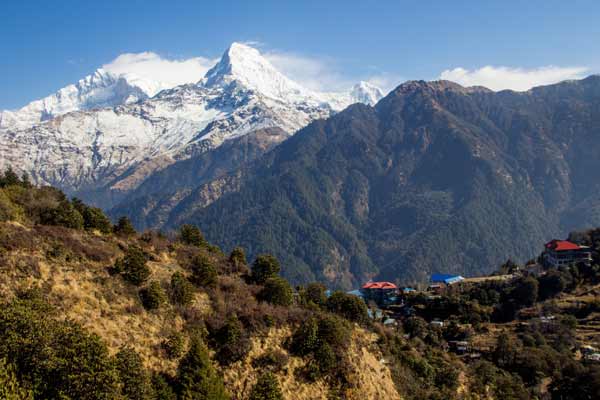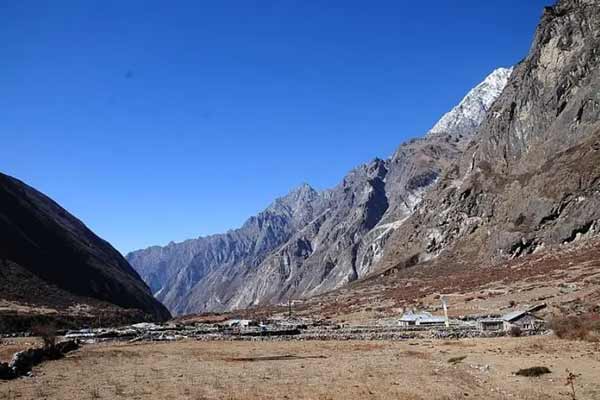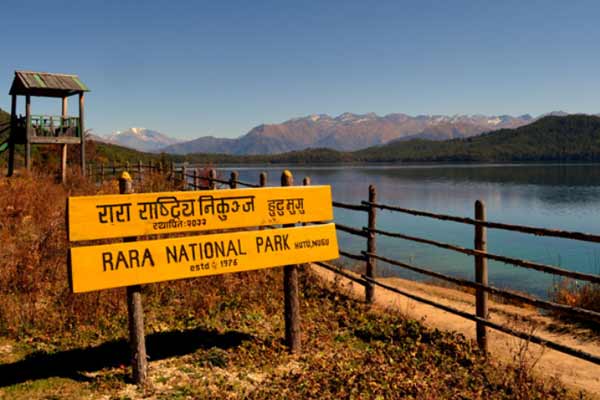
Kanchenjunga Conservation Area
Kanchenjunga is the third highest mountain in the world, bordering Sikkim in India, the Tibetan Autonomous Region of China and east Nepal. The Kanchenjunga Conservation Area (KCA) with an area of 1,650 km square accounts for nearly 65 percent of the entire land area of Taplejung District. Because KCA is located due north of Bay of Bangal , KCA receives more rainfall from the summer monsoon than other parts of Nepal. These climatic conditions, combined with steep elevation gradients, support high biodiversity. Surveys indicate that there are at least 2,500 species of flowering plants, and several endangered wildlife species.
The cultural diversity within KCA is equally impressive as it contains a number of culturally significant landmarks, including centuries-old monasteries (gompa) and sites of Hindu pilgrimage. Limbu, the largest ethnic population together with the Gurung, Rai, Brahmins and Chhetris as well as Tibetan refugees, inhabit the three river valleys - Tamur, Ghunsa and Sibuwa. A majority of the population are dependent on agriculture and livestock. Harvesting of forest resources contribute much to their subsistence. It is estimated that almost 75% of the households in the Conservation Area face food scarcity every year.
History
Kanchenjunga Conservation Area is significantly popular for its glorious Himalayas and world-renowned floral spectrums. It comprises of the most stunning views and wonderful sceneries. The landscapes of the Kanchenjunga region is astounding. The Hills, Himalayas and the cultural values of this region made this region one of the popular zone. The Himalayan beauty and its shadow in the zone are mind-blowing. The glacial streams in this Himalayan region cut through the ridges, forming steep valleys. Moreover, traditional farming practices and agriculture is the way of living in this area. In the Kanchenjunga Conservation Area, the mixed community of Sherpa, Rai, Limbu and Gurung people inhibits. Their cultural values are other major parts to explore.
The area represents high mountain physiographic regions with 65% of its area covered by rocks and ice. The remaining 35% is covered by forests 14.1%. shrubland 10.1%, Grassland 9.2% and Agricultural land 1.6%. The area is well known for its three river valley: the SimbuaKhola, the Ghunsa, and the Tamur valleys. As the original settlers of the Upper Tamar Valley, the Limbu are the dominant ethnic group in the lower regions. The Sherpa/Lama people inhibits in the higher altitude migrated from Tibet more than four hundred years ago.
Flora and Fauna
The different wildlife species in Kanchenjunga Conservation Area include musk deer, snow leopard, blue sheep, Himalayan black bear, Ghoral, red panda and Rhesus macaque. Also, the wide variety of bird species includes Golden-breasted Fulvetta, snow cock, Ashy drongo, Impheyan pheasant, and blue magpie. Around 250 species of birds and few endangered wildlife discovered in this region.
Almost 30 kinds of rhododendron spices are found in the Kanchanjunga conservation area. More than 18 endemic plants are found in this region. The 69 species of orchids out of 250 are found in Kanchenjunga region of Nepal. During the spring season, the area has an excellent display of flowering rhododendrons, orchids, lilies, primula and many other flowers. The diverse floral beauty of this region already made a landmark in the botanical history of the world.
Activities in Kanchenjunga Region
Kanchenjunga Conservation Area is popular for many activities. It has an immense scope of bird watching. The wildlife itself is amazing here. It might be a central vantage for floral admirers. And trekking? It is a way to heaven. Explore the Himalayan beauty of eastern Nepal.
Kanchanjunga Base Camp Trek
Kanchanjunga base camp trek opened in 1998 fo foreigns. The base camp route is a little bit long comparatively than other trekking routes of Nepal. Kanchenjunga’s trip is the best optional for the familiar with culture, tradition, and lifestyle of local people, villages. It is also the part of Great Himalayan Trails, covering eastern Nepal. Trekking through the Arun valley, one of the most beautiful and admirable valleys of Nepal, take you to the Annapurna Base Camp. The variations from alpine to subtropical forests is another major attraction of this trek.
Wildlife Sanctuaries Nepal
Wildlife Sanctuaries in Nepal If your current vacation were to the hill stations, beaches or historic places, then sticking around the “Nepal Wildlife Sanctuary” will be an extremely crazy experience for you. Yeah you heard right, Nepal nestled in the middle of high mountain ranges and infinite grassland has rich fauna and flora. According to conservative evaluation, it has nearly 100 varied species of animals and around 750 types of aerial species in entirety. So without ado, book the accommodation/safari, pack your comfortable attires, binoculars, sun protection gear, camera and get ready to explore the wilderness which is full of plant and animal life. Here are the top 10 Wildlife Sanctuaries of Nepal.
 +91 9799050299
+91 9799050299 